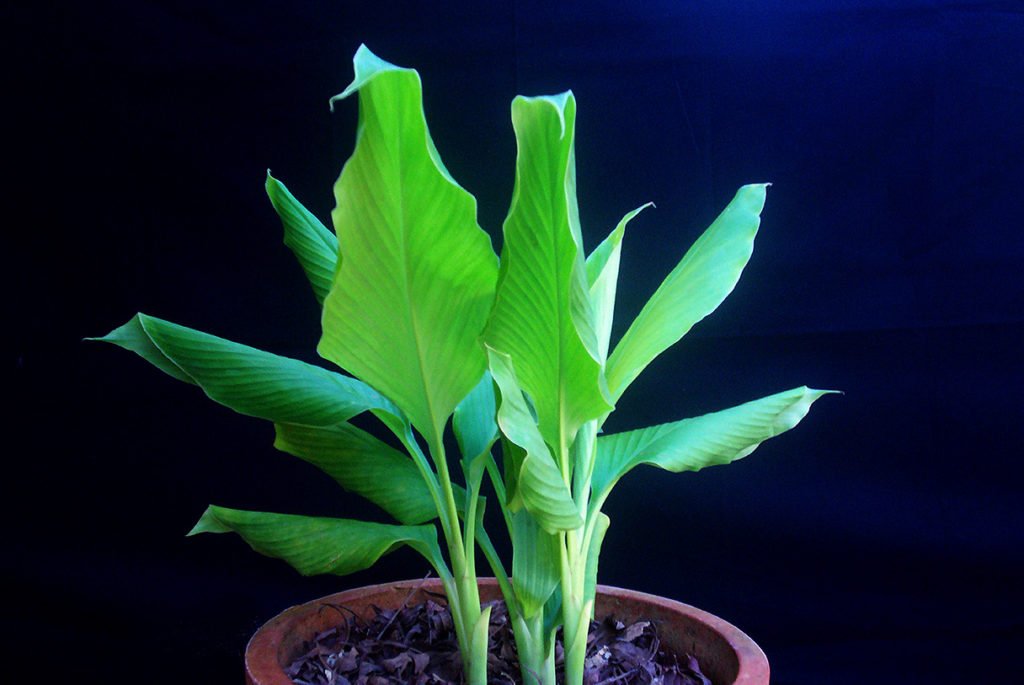Articles
Bio-Chemistry and Uses of Kasthuri Turmeric
Kasthuri Turmeric (Curcuma aromatica) is an indigenous plant well known for its cosmetic and medicinal values. Skin care is the major specialty for which it is used. However, now real or true Kasthuri Turmeric is almost an endangered species. The product sold as Kasthuri Turmeric is not the real Kasthuri Turmeric, but an inferior and cheap substitute called Zedoary (Curcuma zedoaria). Efforts should be made to bring back the real Kasthuri Turmeric to Indian markets. Dr. Velayudhan, Scientist NBPGR, highlighted on the wrong identification of Kasthuri Turmeric even in the Dictionary of Economically Important Plants and hence need correction.
Analysis of biochemical characters of Kasthuri Turmeric at College of Agriculture, Vellayani, showed a protein content of 5.42% on dry weight basis. Curcumin content is very low ie 0.04 to 0.05% whereas in Turmeric it is around 5 to 7%. The total chlorophyll content in the leaves is about 1.1 mg g-1. The essential oil content is 5.83% , crude fibre 3.1%, ash 6.6% and starch 23.6% in the rhizomes. Moisture content is 11.91%.
The crushed rhizomes of Curcuma aromatica are externally applied in combination with astringents, bitters and aromatics to bruises and sprains.The rhizomes are also used to alleviate pains associated with child birth, indigestion, intestinal worms and rheumatism and to remove dead fetus from womb in North East India. According to Kojima (1998) the rhizome is never used as spice or condiment but used only as an aromatic cosmetic material in indigenous medicine.
Curcuma aromatica is recognized as a medicinal herb with strong antibiotic properties. Anti-cancerous properties of Kasthuri Turmeric has also been reported. In cancer therapy, it is utilized to remove cell accumulations in tumors. It contains aromatic volatile oils that help to remove excessive lipids from the blood, reduce aggregation of platelets and reduce inflammation. In addition, the herb’s oily components enhance fibrinolysis and promote secretion of bile, which helps to clear congestion of the liver, promote digestion of fats, and aid intestinal peristalsis. Thus, these essential oils help to get rid of many types of accumulation. In China, it is used in a modern formula for treating coronary heart disease, febrile disease causing mental disorientation, for epilepsy and other neurological symptoms due to phlegm accumulation and for febrile disease.




